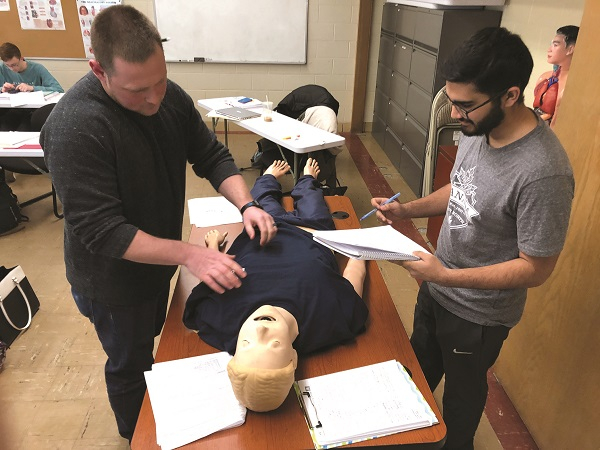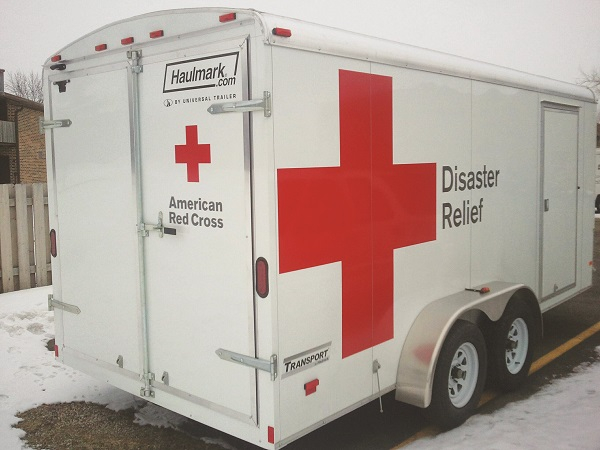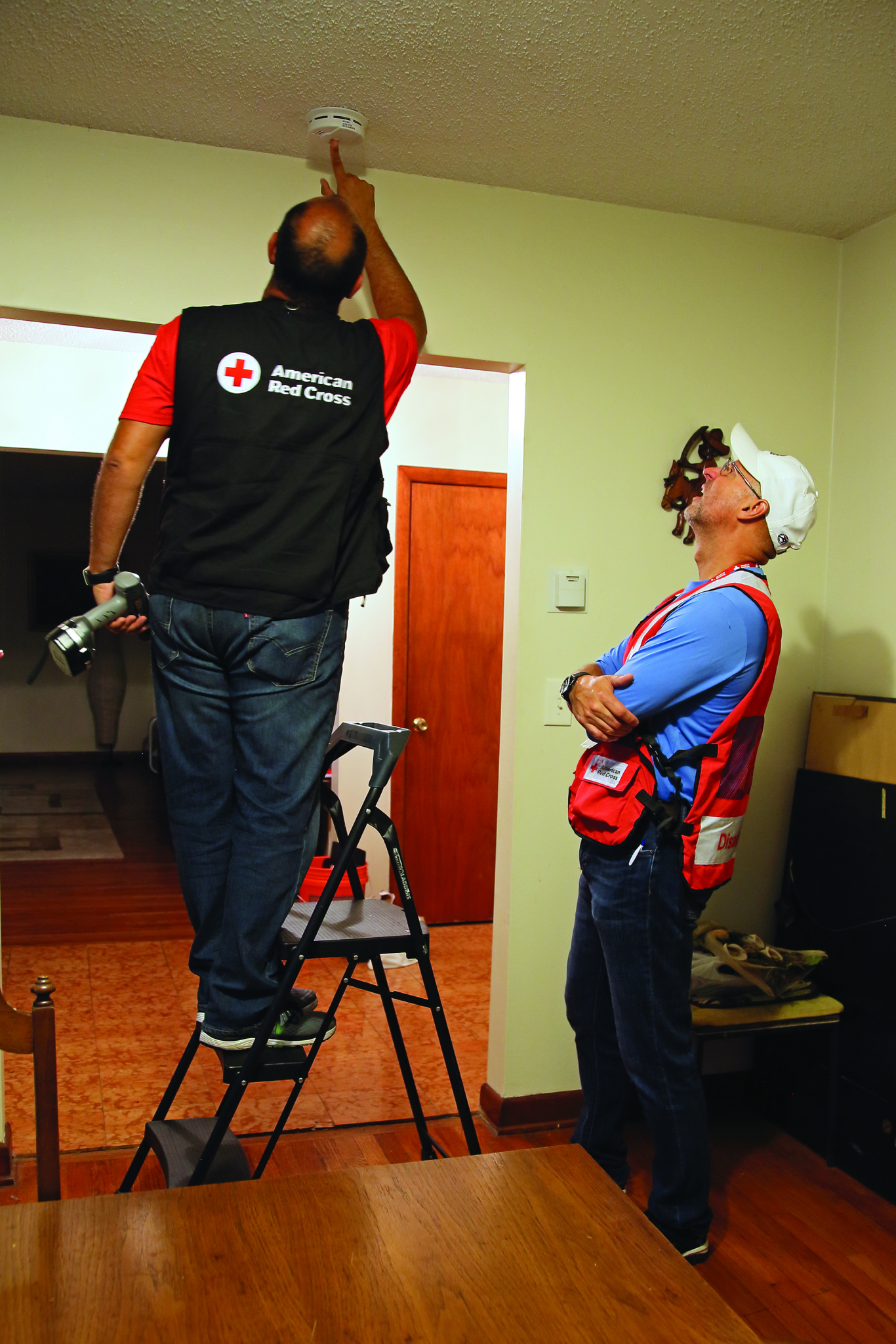Smart Investment: Disaster Preparedness
Disaster planning and emergency preparedness in the Valley.

Disaster planning and emergency preparedness have been one of the main topics of conversation in recent months. For some, planning for worst case scenarios is in their DNA and plays a significant role in the work they do within their organization.
Joe Laucella, Echo Hose Ambulance Corps Assistant Chief, described the Community Training Center in Shelton. "We are constantly preparing our folks on a regular basis, reviewing plans, and conducting drills on different types of scenarios. Take the current pandemic, for example. Every year, we review procedures and protocols with the Naugatuck Valley Health District and review responsive measures such as mass immunizations."
Laucella knows the Valley is in a better position now because of the groundwork was laid before the first case of COVID-19 was diagnosed locally. "We have also conducted classes on bio-pandemics through federal programming," he added.
Teams rehearse the act of setting up medical distribution points to ensure communities would be able to access what they need to remain safe from illness when this kind of response is needed.
The Echo Hose Training Center hosts a wide range of classes for first responders and healthcare providers. "It's important for everyone to be prepared. We also address planning for the business community so they know what to do if situations impact their workforce or if employees must work remotely. All of this information is critical," said Laucella.
 |
Echo Hose Ambulance Training Center offers a range of programs for both those gaining certifications for the first time and for veteran first responders maintaining credentials. |
In addition to positioning people and resources ahead of a disaster, Echo Hose also works to address the finer details of crisis management: paperwork. "We are able to create thorough documentation on file and maintain logs of time and resources allocated so we can submit accurate data for federal reimbursement opportunities."
Laucella said that emergency response is a two-way street. "It's great to see the community coming together to support the folks on the front lines. The Valley community always steps up," he said. "We appreciate how individuals and organizations like VCF are there for us, take the time to understand who we are, what we do, and provide us with critical resources that we need. Most of our training is funded by the federal government but that amount doesn't extend to the training center - space that not only allows us to support the Valley, but the region and the state as well."
He added, "I can't express enough gratitude for the people who are putting themselves out there to help others. Attribution oftentimes goes to police and firefighters—and rightly so—but, thankfully, we rarely have health emergencies that shine a light on what our healthcare providers do. We know they've been working hard every day putting aside their fears to help as many people as they can."
The work at the training center never ends. "We're constantly adjusting procedures and ever changing safety measures because we're always learning how to continuously improve and be more prepared for next time," Laucella said.
Just as there are individuals who respond, so too, are there organization who aid individuals and families most closely effected. Some elements of this responsive effort is the ability to mobilize various forms of support. The American Red Cross (ARC) is one such institution.
 |
VCF partnered with the following donor advised fund holders to support the purchase of a disaster response trailer for the American Red Cross in 2013 for the benefit of the Valley: Dorothy Palazzi of the Palazzi Family Fund; the Pagliaro and Haywood Families of the Joseph A. Pagliaro, Sr. Family Fund; the Stamos-Vartelas Family, of the John and Paraskeve Vartelas “Agape” Fund. |
Lynn G. Fairfield-Sonn, ARC Regional Philanthropy Officer and Susan Shaw, Senior Director, Disaster Cycle Services, noted that of the four areas in which ARC specializes—humanitarian, biomedical, training, and armed forces services—the key to transforming compassion into action is to make sure there are always trained individuals nearby, ready to use their Red Cross skills to save lives.
"We make sure we have the capacity to respond when we're needed," Shaw said.
"Susan and her team respond to almost every fire in her territory, working with local EMS, police, and firefighters," Fairfield-Sonn noted. "Under the new social distancing protocols, the teams are doing more work remotely, such as helping families find long-term lodging and connecting them with social services, but there is still a Red Cross representative who goes to the site."
"So many people are facing hardship right now, so something like a fire, on top of everything else, would be absolutely devastating. We operate with volunteers, many of whom assist with support functions like checking the availability in nearby hotels on a regular basis to make sure we can secure accommodations for displaced families in need," Shaw said.
Training is still needed and continues with people learning CPR in a combination of both virtual and real-world settings. She added, "Training and how to deliver it safely is at the top of our minds, including psychological first aid that mental health teams are putting together."
Fairfield-Sonn pointed out, "When we talk about disaster cycle services, preparedness comes in many forms. In the past, VCF and its fund holders have supported the purchase of a trailer, cots, and supplies so that we could open an emergency shelter for a large group of people. Funding from an additional grant was used to purchase smoke alarms, which we were able to provide at no cost to families while we educated them about fire prevention."
 |
American Red Cross trained volunteers install free smoke alarms and work with families to develop emergency plans. |
Acknowledging that ARC is known for providing 40% of the nation's blood supply, they and other volunteers are working to ensure that people suffering from accidents or chronic illnesses can access the blood product they need to survive. The ARC is currently working with FDA to collect plasma from patients convalescing from COVID-19 in an effort to better understand the nature of the virus and investigate how transfusions from those who have since recovered may assist those currently fighting the virus.
The ARC works in partnership with the Valley community, participating in meetings and communicating both needs and resources to benefit residents and businesses. "You don't need us until you need us, but we're always working," said Fairfield-Sonn.
Services are also in place from ARC that help active and retired members of the armed forces, including training for their families. "They need to know how to access support because we can help communicate information like family emergencies when our men and women are serving overseas. Working with the military was a priority for Clara Barton, founder of the ARC."
Impressively, 90% of the ARC workforce is volunteer. Shaw said, "Everyone participates in ongoing training and we couldn't do this work without the committed people who get up in the middle of the night to help people they have never even met. Right now, we understand why we can't hug someone in trouble, but we can still be there for them."
While disasters vary by type and from time-to-time, one thing remains true - there are those who are doing everything they can to remain prepared to respond.
